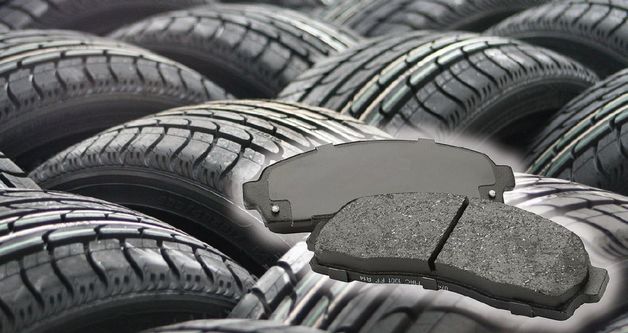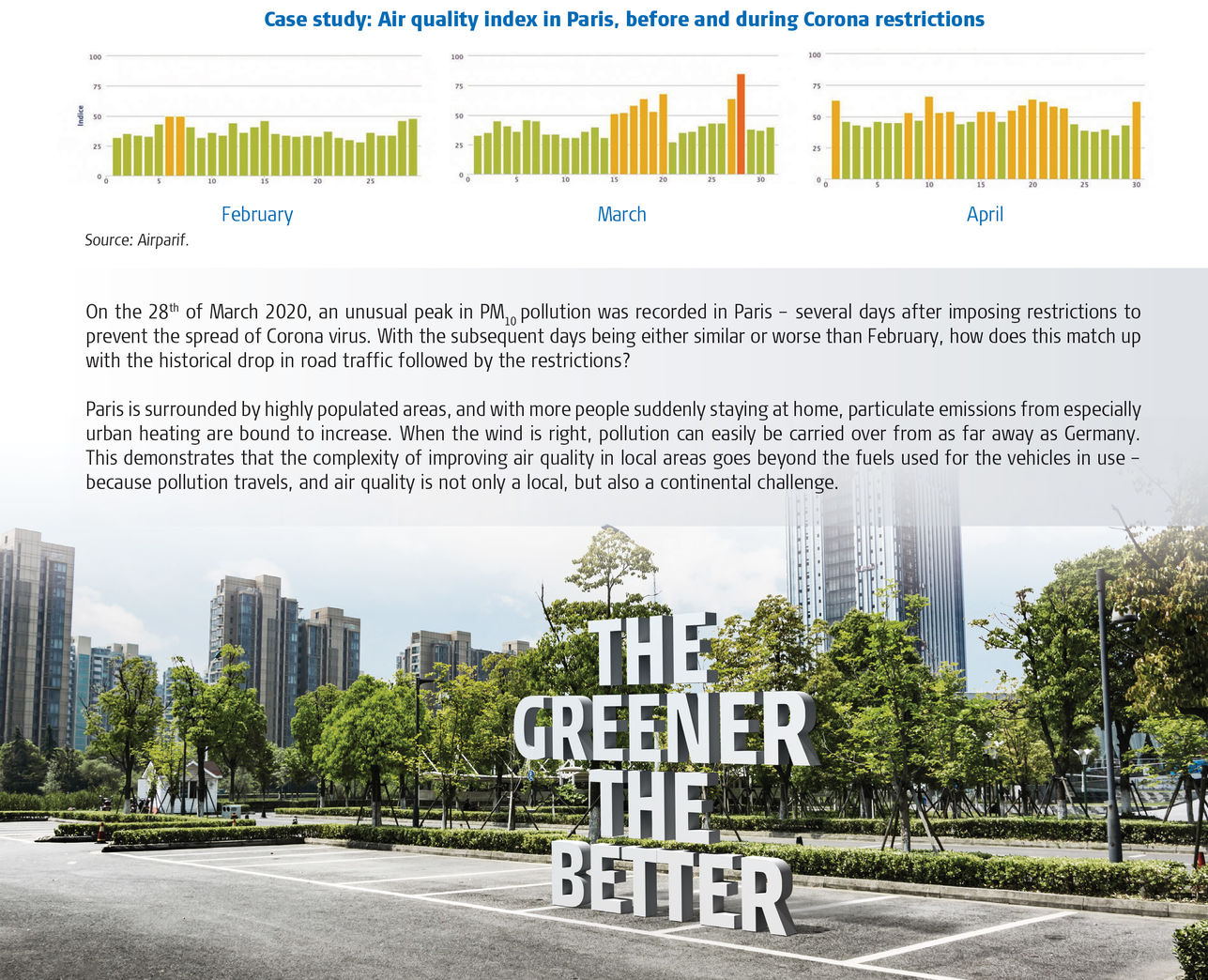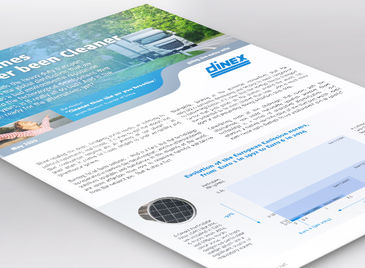- News and Events
- News
- 2020.05.20, Diesel Engines have never been cleaner
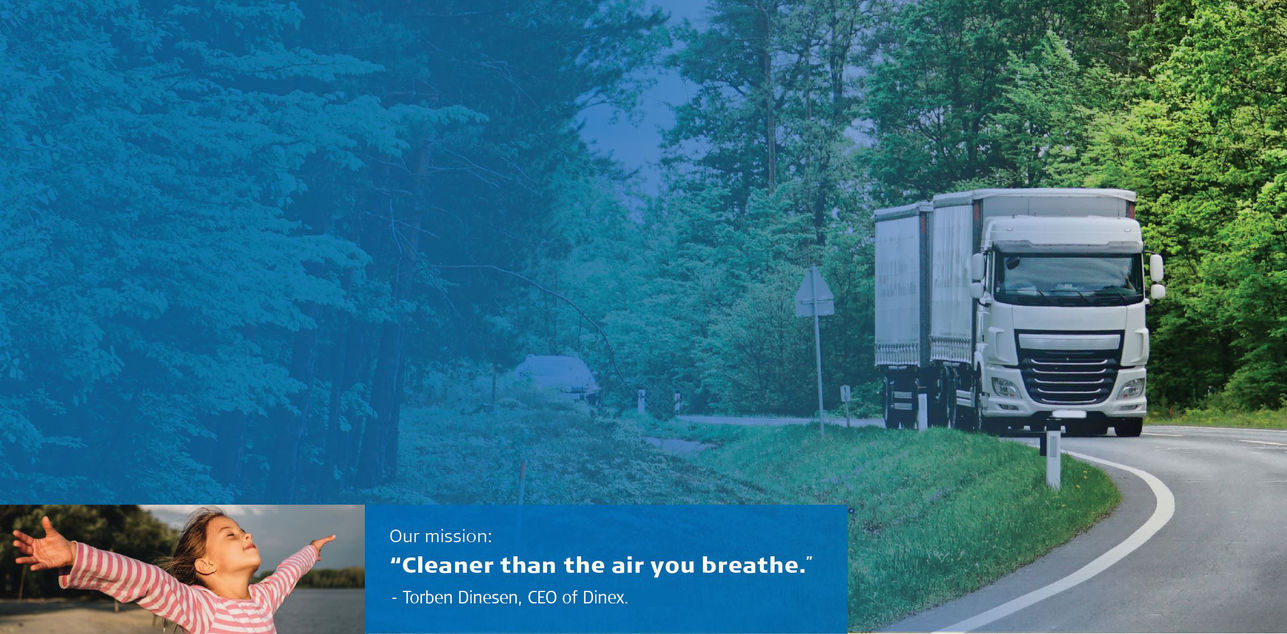
Diesel Engines have never been Cleaner
The backbone that fuels the heavy duty transport sector, and enables the global distribution that we all depend on, has a bad environmental reputation. But digging into the technological development over the past 30 years, is it really all so bad? And is the world even ready for the alternatives yet?
When reading the news, browsing social media, or listening to political movements and trends, it is easy to get the impression that combustion engines are an enemy of our planet – at least when it comes to issues related to poor air-quality and greenhouse gases.
Burning fossil fuels pollutes – that is a fact. But the technology incorporated in modern day diesel engines, and the aftermarket solutions available and mandatory in the majority of the world, are more effective than ever in removing harmful substances from the exhaust gas. That is also a fact.
Meanwhile, looking at the potential innovations that the industry is currently developing and testing to meet compliance to future legislation, it is clear that the energy-thirsty transport sector that puts goods on the shelves around the world, has the potential to be even cleaner than now – also in much more diverse and demanding driving situations than now.
Considering some of the challenges that come with the alternatives, one could reasonably question whether diesel technology is a victim of unjustified stigmatization – and whether a rushed electrification of the transport sector, might even cause more damage to our environment and air quality?
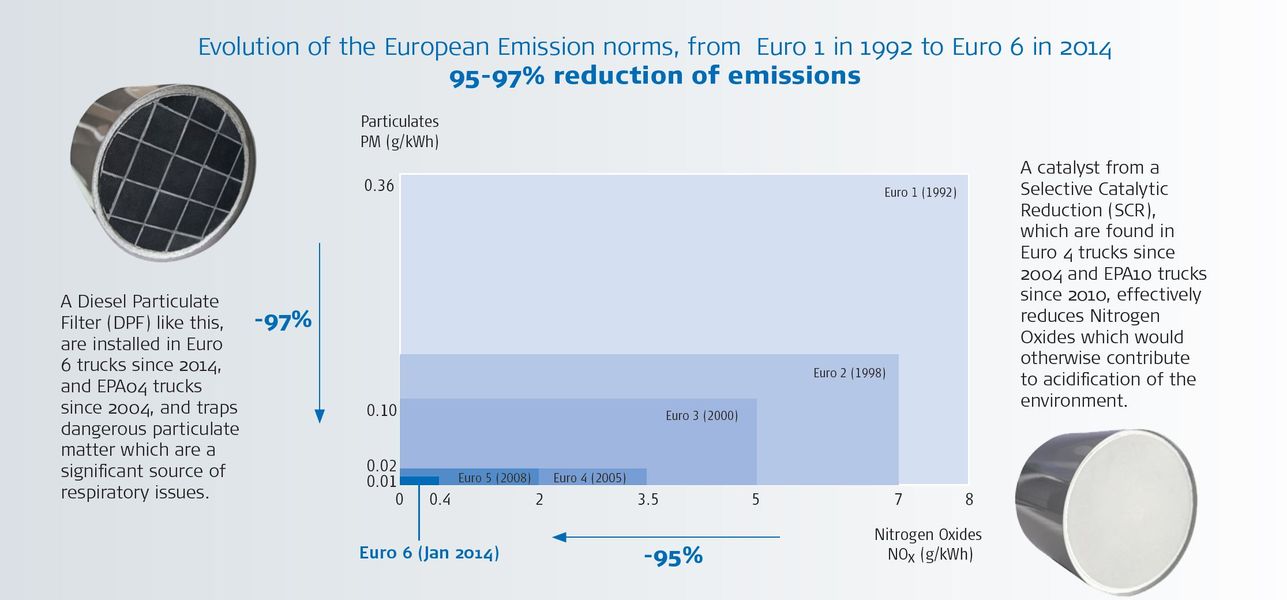
What we have achieved today…
Since the introduction of the first European Emission standard -the Euro 1 in 1992 – the allowed level of Particulate Matter (PM) and Nitrogen Oxides (NOx) emitted by trucks has been reduced to nearly insignificant levels. Further to that, with the introduction of Euro 6 in 2014 and the American EPA04 in 2004, the limits for emitting ultra-fine particles finally called for installation of Particulate Filters on basically all new trucks.
Particulate filter technology, like the CHP-SiC developed by Dinex, traps in average more than 99% of the ultra-fine particles, and over 95% of the total particulate matter from the exhaust gas. SCR technology has since its wide adoption in the heavy duty transport sector 10-15 years ago, proven itself effective in reducing over 95% of the NOx in the exhaust gas – and the technology is still being refined today for further reduction.
The whole world follows the same trend, and in less than 12 months from now all new vehicles sold also in Russia, China, and India will be complying to similar strict emission standards as those in Europe and USA.
This is a trend that saves lives! And to prove it, several studies from recognized technological institutions in both Germany, Denmark and UK, demonstrate how air quality in urban areas is actually more polluted than the air from the tail pipe of a modern EURO VI diesel vehicle.
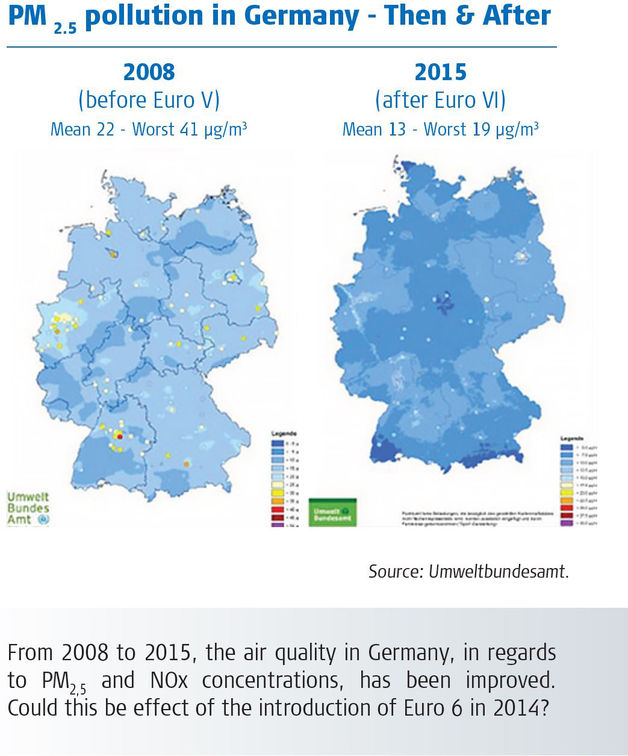
… and what we can do tomorrow.
The most recent advancement in emission legislation – the Euro 6e introduced in 2020 – called for even stricter testing of new vehicles, moving the approval process out of the labs, and into the real world. But the technological development and tightening of emission legislation, is far from over, and with the next step – popularly called Euro 7 – we expect to see new standards for cold start performance, urban driving, and CO2 emissions, while further reducing NOx emissions to a level between 0.1-0.2 g/kWh, and finally scoping also previously ignored pollutants such as N2O and NH3.
The automotive industry is ready for this challenge, and several solutions are already proven. Catalyst technology, SCR-systems, flow designs and thermal preservation, are just some of the technologies that we can optimize even further, and already now Dinex has pending innovations for ground breaking new technologies, for developing aftertreatment solutions for the requirements of tomorrow.
But what about the CO2? Already Diesel is one of the most CO2-efficient fuels available, but also here we see examples of innovative progress: Light-weight components, Aerodynamic designs, hybrid-electric powertrains, low-resistance tires, and intelligent fleet management, has shown a full potential to cut fuel consumption – and hence CO2 emissions – by over 30%!
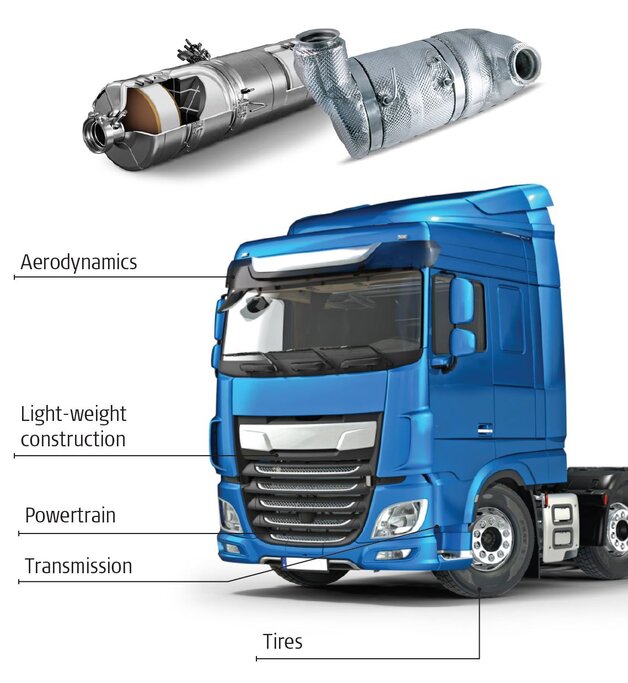
Continuously pursuing cleaner air –
but it’s not all about tail pipes.
There are still a lot of old vehicles out there, and there are political trends to ban even pre-Euro 5 vehicles from entering certain urban areas. As we’ve seen over the past 30 years, promoting the latest emission standards has a huge impact on air quality, and the industry continues to improve the technologies that brought us this far.
But to keep up the pace on the good trend, it calls for a wider focus than simply what is coming out of the tail pipes. Exhaust gas is not the only source of Particulate pollution, and to put that into perspective studies shows that for a modern diesel vehicle, over 90% of the PM10 and PM2.5 emissions comes from tire wear, brake wear and road wear. Although different types of particles, still a pollution source that brings environmental and health related challenges – and which are bound to intensify with the trend of increased weight of electrified vehicles.
Finally, although poor air quality is often considered a local issue, solutions must be found also continentally. Pollution travels from region to region, which is why we start to see tendencies that
while the transport sector is getting cleaner at the tail pipe, an increasing share of both PM and NOx-pollution in urban areas, comes from sources outside the area where it is measured, such as marine application (ships), urban heating, and electricity production from power plants.
